As a chef, it is important for you to have a clear understanding of how each knife you want to purchase functions because the right knife will encourage you to prepare foods with confidence, joy, and creativity.
In today’s article, we are discussing Gyuto vs Bunka.
Gyuto vs Bunka are both special kitchen knives designed to help bring out the best of every recipe.
These knives are different in their blades, designs, strength, and balance.
GYUTO KNIFE
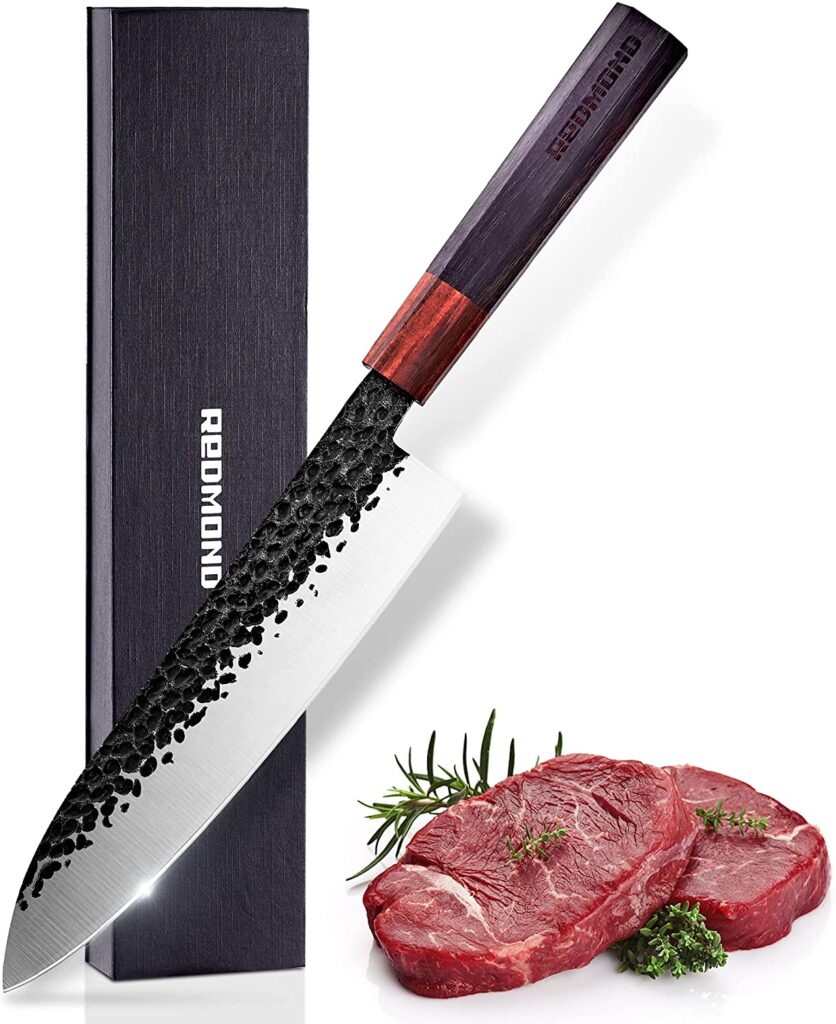
The Gyuto is one of the most accomplished and essential blades when it comes to fine cutlery, from filleting to chopping. It is basically or literally the Japanese version of the chef knife, making it easy to access for most chefs to use.
Gyuto is known as the Japanese version of the Western Chef’s knife. It is a multipurpose knife that can take various ranges of kitchen tasks.
The Gyuto has a pointed tip blade that is good for precision cuts and the blades are heat-treated for optimum hardness and edge retention. The flat heel section of the blade is excellent for rock chopping.
The Gyuto blade is designed with stainless steel, and the steel is resistant to corrosion, preventing oxidizing with rust when you use it in contact with meat, fruits, and vegetables.
The blade of the Japanese Gyuto is typically thinner and lighter than that of a Western chef’s knife.
Another important feature is the technique of cutting, chopping, and mincing by rocking the knife edge from tip to the heel during the cut.
The handle maintains the test of time through use, giving you a balanced feel when manipulating the knife.
BUNKA KNIFE
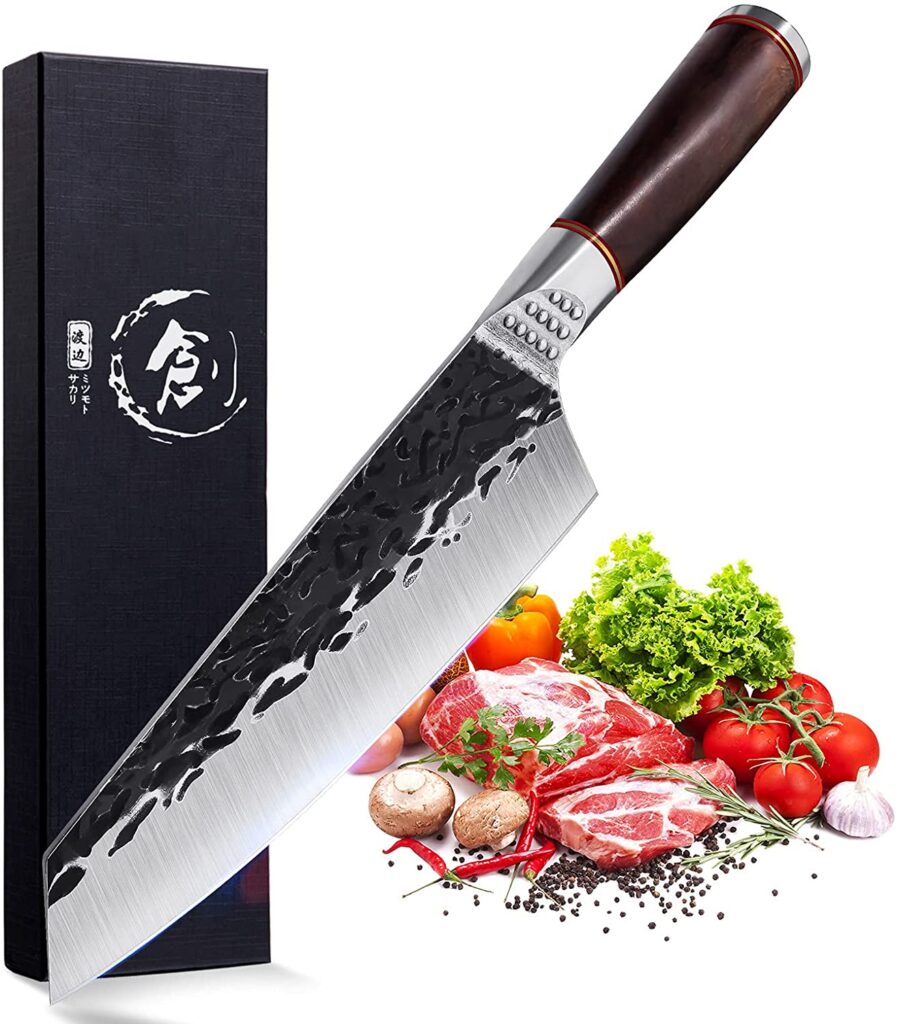
Bunka knife is a general-purpose Japanese knife for a wide range of kitchen use. Bunka knife is a multipurpose knife-like Santoku. The multipurpose kitchen is excellent for chopping, dicing, slicing, or mincing.
The Sankotu was one of the earliest multiuse knives, similar to the Santoku and Gyuto knives for kitchen tasks.
The main difference between the Santoku and the Bunka Bochon lies in the shape of the tip, with the Bunka Bocho having a reverse tanto tip/clip point, rather than the curved Kamagata tip.
Bunka has a straight sloping curved edge which makes it great for chopping and cutting, and its slope-pointed tip is an advantage for piercing and slicing. Its tip is also excellent to go through under flat and sinew meat.
Bunka knives are generally versatile and can be used to cut vegetables, fruits, fish, and other foods.
GYUTO VS BUNKA
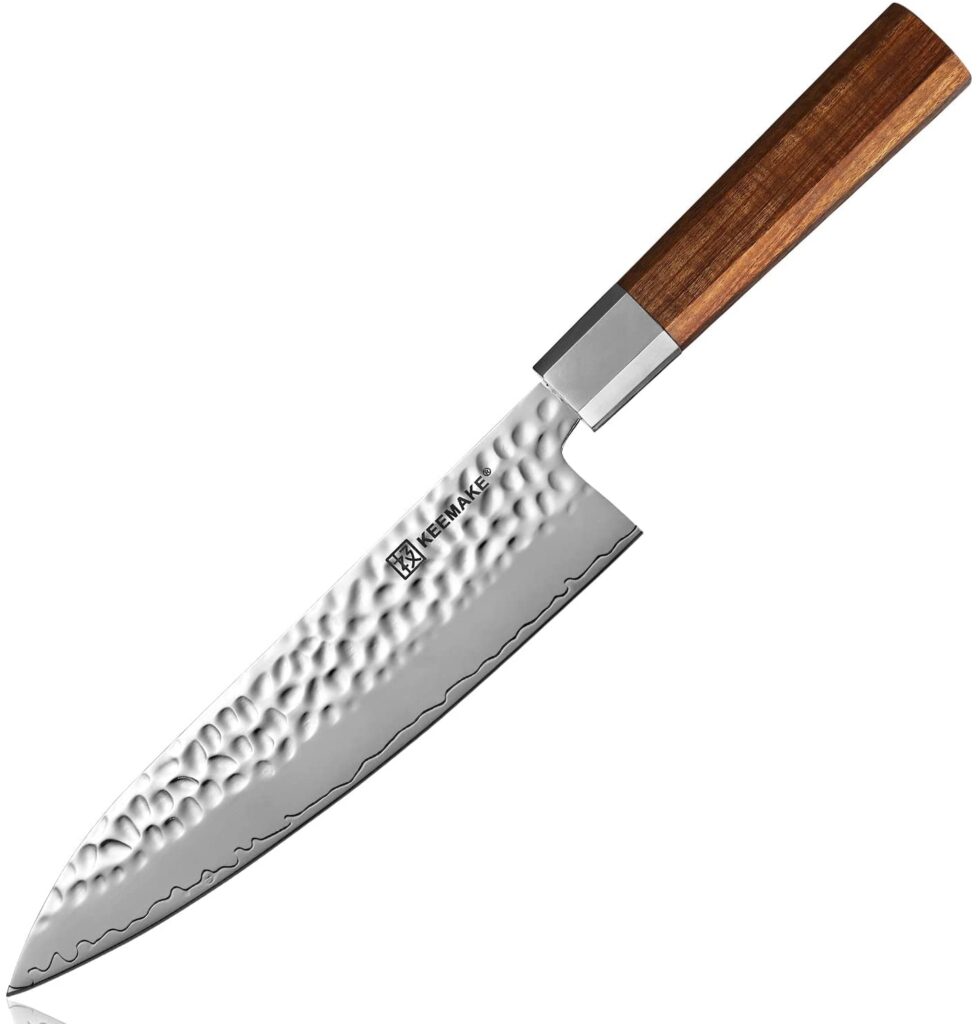
Gyuto vs Bunka knives share many similarities but also have their differences when you compare them.
Bunka blade allows its owner to use a push and pull motion to slice through ingredients while Gyuto allows its owner to use a rocking chop motion.
Gyuto knives have single and double bevel blades while most Bunka knives have double bevel blades, which is suitable for both right and left-handed people.
Gyuto blade is sharp and cleans up easily while the wide blade of the Bunka knife allows you to cut up ingredients with no stress, and the tip is handy when slicing meat and fish.
The Gyuto blade length range from 9 to 10 inches while the Bunka knife’s length comes in a wide range from 120mm to 240mm. The most used Bunka knife blade is around 165mm and is considered to be balanced and suit for many purposes.
Gyuto and Bunka knives can be used for slicing meat, chopping vegetables, cutting fruits, and even slicing fish.
The Gyuto and Bunka have non-stick blade coating that keeps food from sticking to the knife while cutting.
The Gyuto and Bunka have a perfect weight/balance design and offer a comfortable and sturdy feel for use.
READ ALSO: BEST CUTTING BOARD FOR JAPANESE KNIVES
GYUTO CHEF’S KNIFE, 8-INCH JAPANESE
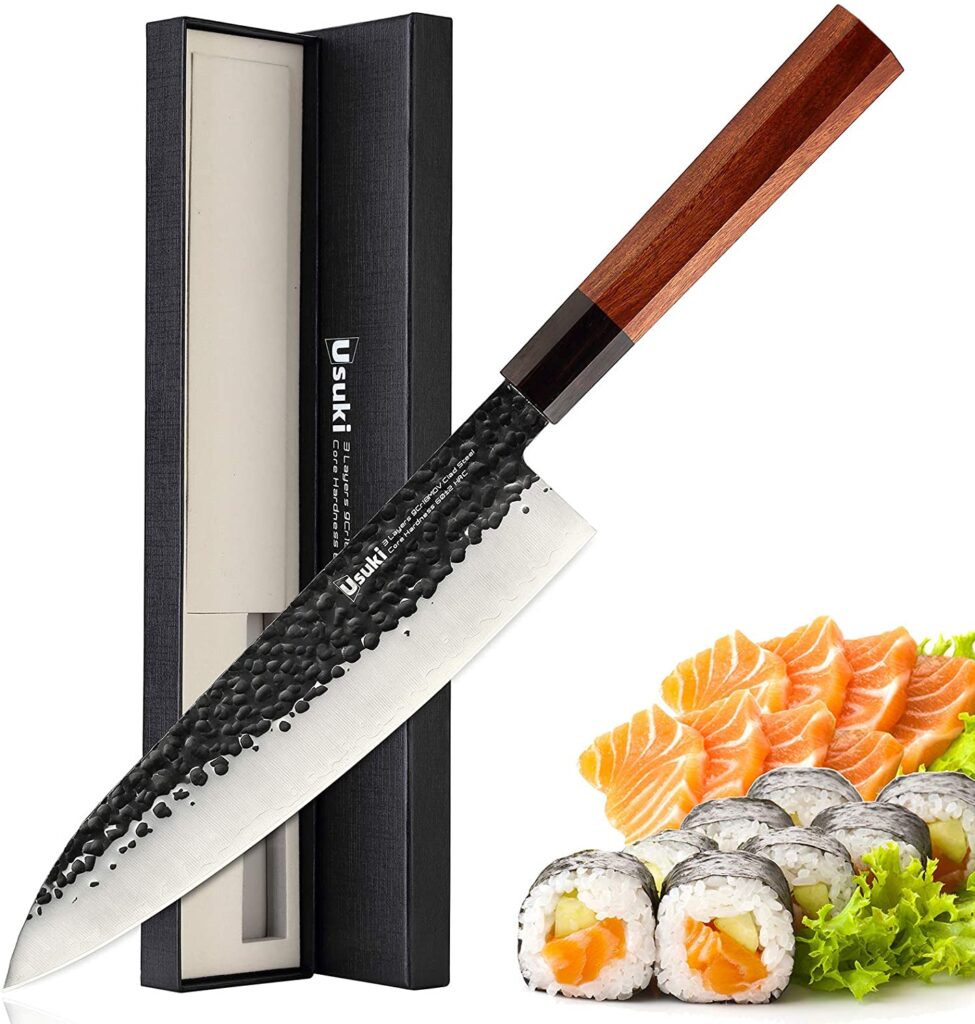
Great steel for the everyday use of any chef, With an HRC of 60+/-2 it will take an angled edge and hold it for long enough to help extend the life of your knife.
The handle of this chef’s knife is octagonal designed to show the special beauty of chef knives. It provides a comfortable grip, is not easy to slip, sturdy, and labor-saving.
This Gyuto chef knife features supreme sharpness, long-term durability, and incredible edge retention. Its Precision forged construction for better strength and durability.
The composite process makes the whole knife more distinctive and highlights the professional identity of the chef.
This Gyuto chef knife is good for mincing, slicing, and dicing fruit, meat, fish, and vegetables in the
kitchen because of its excellent performance.
READ ALSO : HONESUKI VS DEBA
BUNKA VS SANTOKU
Bunka and Sankotu are very much similar to each other, with few differences between the knives.
Bunka is a versatile purpose knife as Santoku.
Santoku knife has a better rocking motion without getting the tip of the knife into the board.
Bunka and santoku are both good at slicing.
The tip of the Bunka knife can cut through onion very well.
The main difference between the Santoku and the Bunka Bocho lies in the shape of the blade tip, with the Bunka Bocho having a reverse tanto/ clip point tip rather than a curved Kamagata ( sickle-shaped) tip.
KIRITUSKE VS BUNKA
Kiritsuke can come in two forms, single bevel edged that can be used to perform tasks like chopping vegetables or preparing sushi but require a lot of time to master it and the double bevel kiritsuke makes an excellent chef.
The kirituske and Bunka has a flat profile which is good for the up and down chopping.
Both knives are used for slicing but the kiritsuke knife is better for slicing than the Bunka.

Kirituske is the resemblance to the Gyuto and is equal to a chef knife while Bunka is the multipurpose knife-like Santoku
Kirituke is used commonly by master chefs in the restaurant because is one of the most difficult knives to use while Bunka is used by home or professional chefs.
Both knives are versatile and good for use.
BUNKA VS NAKIRI
Bunka has a reverse tanto tip which is useful for precise cutting while Nakiri knife is specially designed for cutting vegetables and has a skinny sharp blade and blunt, cut-off tip.
Nakiri knives make straight and even cuts through vegetables, leaving you with a full, clean slice without squashing your ingredients.
Bunka is a double bevel knife while Nakiri is a double bevel-edged traditional Japanese knife with a thin blade profile for quick chopping, slicing, and mincing vegetables and fruits.
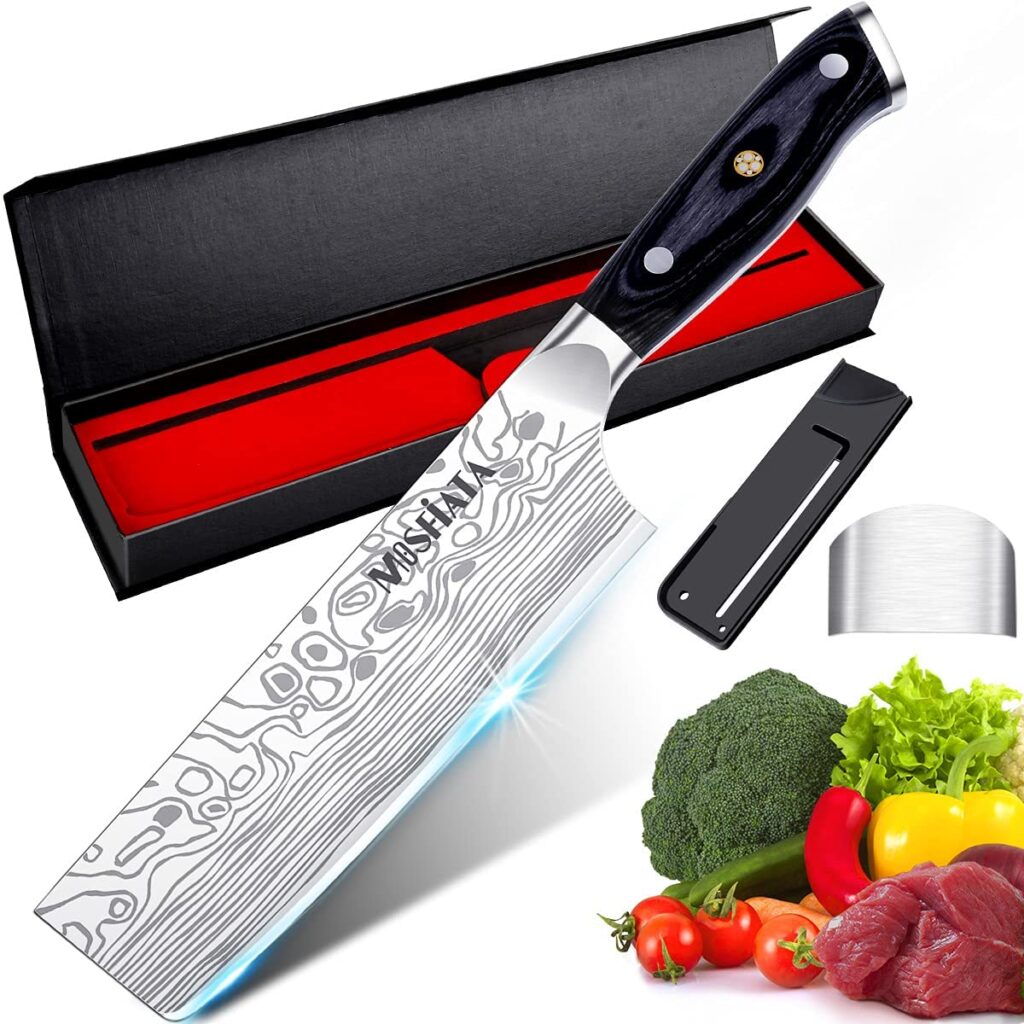
Bunka and Nakiri have a flat blade that is used for the push and pulls chopping of vegetables.
Bunka has a flat smooth profit that allows precise cutting while Nakiri is extremely sharp and thin, providing you with smooth, clean cuts and chops all the way down to the cutting board.
Bunka is a multipurpose knife while Nakiri is mostly for vegetables and fruits.
The Bunka knife’s length comes in a wide range from 120mm to 240mm while the blade of Nakiri ranges from 6.5 to 7 inches.
KIRITSTUKE VS GYUTO
Kiritstukeknife has a reverse tanto tip, which is used for precise cutting while the Gyuto knife has a sharp tip for precision cutting; they are also good for chopping, slicing, and mincing basically anything.
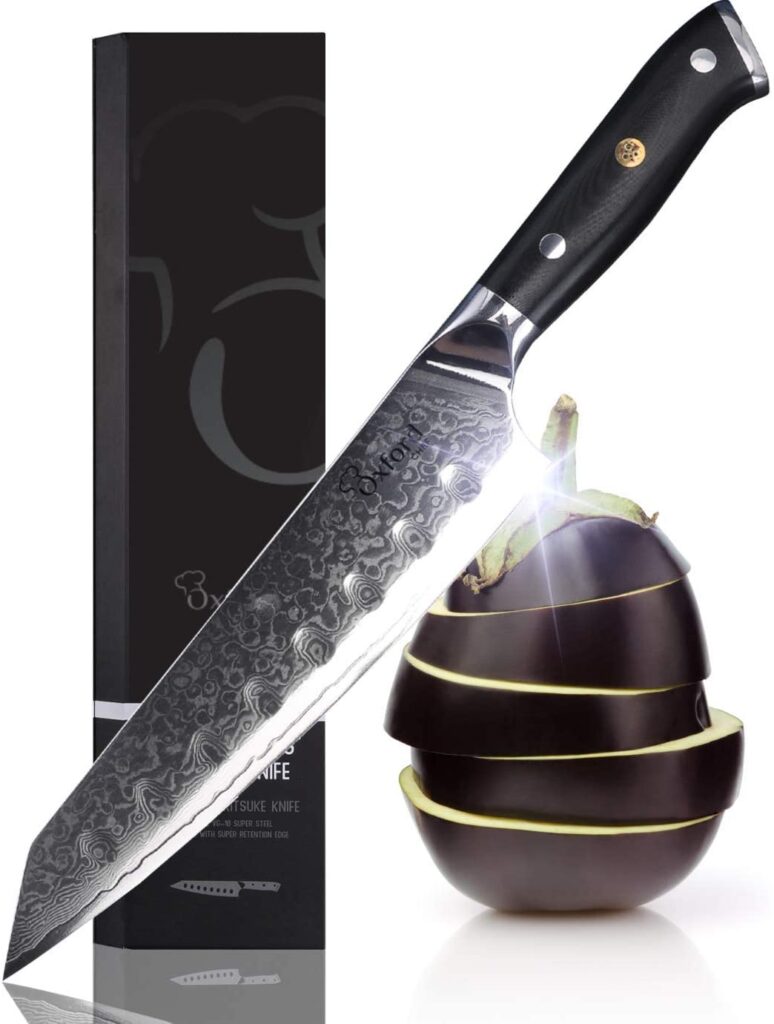
Kiritstuke has a better push and pulls cutting motion while the Gyuto has a better rocking motion.
Kiritstuke has a single bevel while Gyuto has a double bevel.
When it comes to slicing, Kiritsuke can be used perfectly for slicing with its super flat profile and smooth structure.
Kiritsuke knives come with blade lengths ranging from 240mm up 330mm and the 270mm size is the popular alternative to the Gyuto.
READ ALSO: BUNKA KNIVE